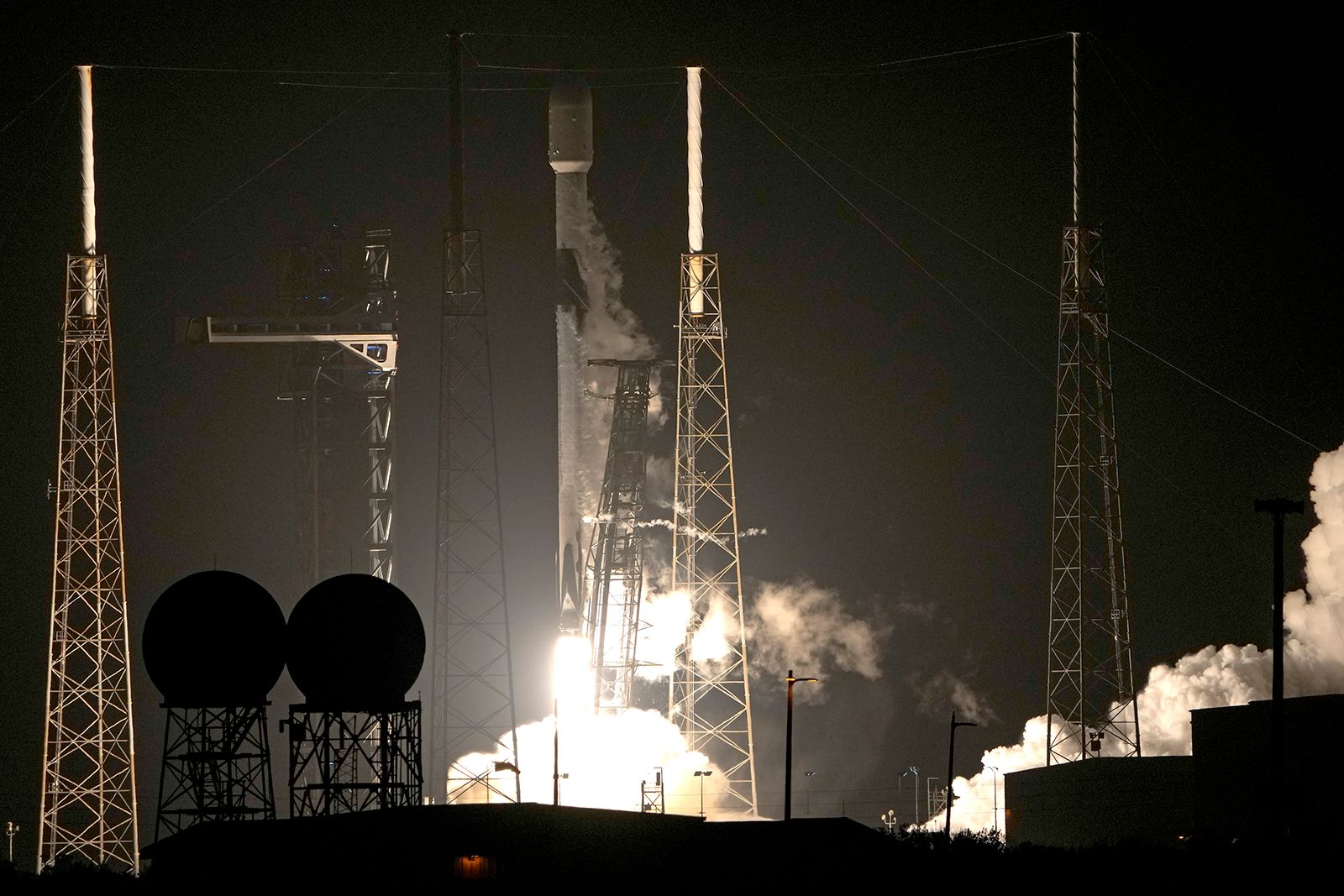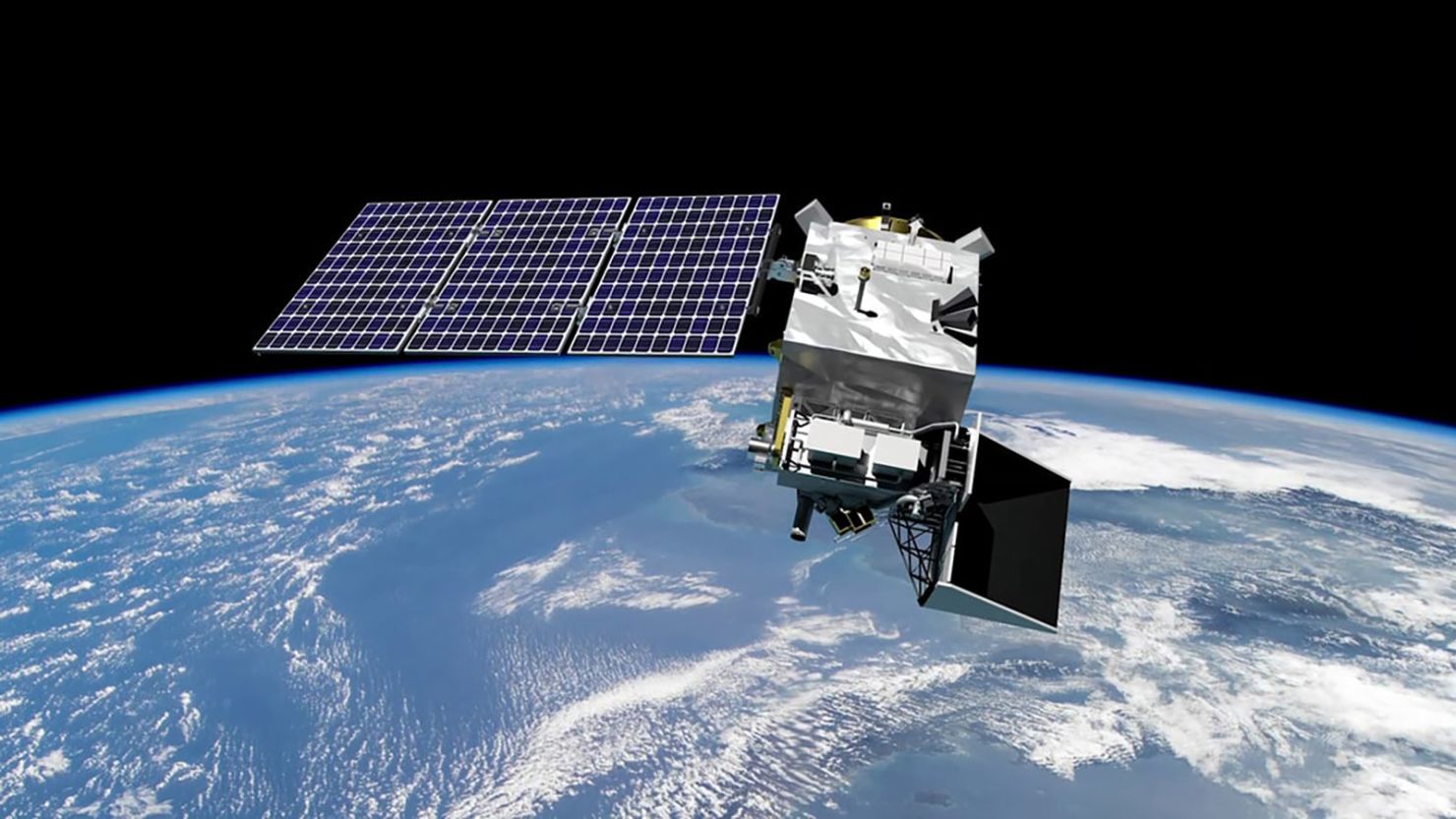NASA Launches New Mission To Explore Earth's Ocean And Atmosphere
NASA launches new mission to explore Earth's ocean and atmosphere. Early Thursday morning, the NASA PACE (Plankton, Aerosol, Cloud, and Ocean Ecosystem) mission embarked on a groundbreaking journey, launching from Cape Canaveral Space Force Station in Florida at 1:33 a.m. ET.
Author:Rhyley CarneyReviewer:Paula M. GrahamFeb 09, 202414.1K Shares201.7K Views

NASA launches new mission to explore Earth's ocean and atmosphere. Early Thursday morning, the NASA PACE (Plankton, Aerosol, Cloud, and Ocean Ecosystem) mission embarked on a groundbreaking journey, launching from Cape Canaveral Space Force Station in Florida at 1:33 a.m. ET. Aboard a SpaceX Falcon 9 rocket, the mission soared into the sky, marking a significant step in Earth observation.
Following a smooth liftoff, the Falcon 9's booster gracefully returned to Earth approximately 10 minutes later, demonstrating SpaceX's adeptness in reusable rocket technology. Within half an hour of liftoff, the PACE spacecraft signaled the successful deployment of solar arrays, ensuring its vital power supply.
Originally scheduled for Tuesday, the launch faced two delays due to adverse weather conditions, including high winds and cumulus clouds. However, Thursday's forecast boasted over 95% favorable conditions, allowing for a successful launch.
Reflecting on the mission's origins, Jeremy Werdell, the PACE project scientist, noted that scientists had conceptualized the need for a deeper understanding of how oceanic and atmospheric dynamics influence Earth's ecosystems nearly two decades ago. Now, with PACE in orbit, researchers anticipate gaining unprecedented insights into these intricate processes.
PACE's mission aims to illuminate the intricate interplay between aerosols, clouds, and phytoplankton in the ocean, serving as crucial indicators for both ocean health and global warming. Equipped with three cutting-edge instruments - a duo of polarimeters and a high-resolution camera - the spacecraft is poised to gather a spectrum of data across various wavelengths of light. According to Karen St. Germain, director of NASA's Earth Science Division, this comprehensive approach enables researchers to observe phenomena previously beyond human perception.
"What we're doing here with PACE is really the search for the microscopic, mostly invisible universe in the sea and the sky, and in some degrees, on land, too," Werdell said.
While originally planned for a three-year mission, PACE possesses sufficient fuel reserves to prolong its orbit and Earth observation for up to a decade. This extension ensures its integration into NASA's comprehensive suite of over two dozen Earth science missions, which diligently collect data on oceans, land, ice, and the atmosphere.
By continuously gathering insights, PACE, alongside initiatives like the international Surface Water and Ocean Topography mission (SWOT), which commenced in 2022, has the potential to revolutionize researchers' comprehension of Earth's oceans.
“„We are undeniably in the midst of a climate crisis. Our planet is undergoing transformative changes from the surge in extreme weather events and devastating wildfires to the rising sea levels. NASA is not just a space and aeronautics agency. We are a climate agency. We leverage the unique vantage point of space to study our home as a holistic planet, collecting vital earth science data. This information is then available to people worldwide, empowering them to make informed decisions on how to safeguard our planet and its inhabitants for generations to come.- NASA Deputy Administrator Pam Melroy
Aerial Eyes On Earth's Skies
Kate Calvin, chief scientist and senior climate advisor at NASA, along with other agencies, revealed in January that 2023 marked the hottest year on record, continuing a trend of global temperature escalation over the past decade. Greenhouse gases like carbon dioxide are primarily responsible for this warming phenomenon. Although land and oceans absorb some of the emitted carbon dioxide, a sizable portion remains in the atmosphere and forms a greenhouse gas layer that contributes to global warming.
"One of the great things about a mission like PACE is it’s going to give us a better understanding of the exchange of carbon between the ocean and the atmosphere," Calvin said.
Apart from greenhouse gases, additional contributors to warming include aerosol particles in the atmosphere, comprising pollutants, dust, smoke, and sea salt, as highlighted by Kate Calvin. These aerosols have the capacity to either reflect or absorb sunlight and influence cloud formation. St. Germain emphasized the significant impact of aerosols on Earth's weather, air quality, and climate.
"They come from sources like dust blowing off the Sahara wildfires and even human activities," St. Germain said. "They seed clouds that can grow into hurricanes coming across the Atlantic, but they also reflect a lot of the sun's energy. So, they too play an important role in the long-term stability of Earth's climate."
Andy Sayer, PACE atmospheric scientist, underscored that aerosols can exacerbate poor air quality, leading to chronic conditions like asthma. A comprehensive understanding of aerosol composition and its atmospheric distribution is crucial for identifying pollution hotspots and issuing more effective warnings. With the aid of the two polarimeter instruments aboard PACE, scientists will analyze aerosols' particle size, composition, and quantity across various wavelengths, offering a comprehensive overview of problematic regions.
Mapping Microscopic Life From Space
Scientists are confronted with numerous questions regarding the vast oceans that cover approximately 70% of Earth's surface. However, there is optimism that PACE could play a pivotal role in providing answers to these inquiries.
“„In many ways, we know more about the surface of the moon than we do about our own oceans. PACE will be the most advanced mission we’ve ever launched to study ocean biology. It's going to teach us about the oceans in the same way that Webb is teaching us about the cosmos.- Karen St. Germain
PACE will observe the oceans from orbit in search of the reflected light that phytoplankton, tiny organisms that thrive on the ocean's surface, emit. Equipped with the Ocean Color Instrument, the mission will utilize over 100 distinct wavelengths of light to conduct a comprehensive global study of phytoplankton. This endeavor aims to identify various species, including those that may pose a threat to other life forms, marking the first time such observations have been made from space.
According to NASA, phytoplankton serve as the foundation of the marine food chain. Their absence would lead to the collapse of this vital ecosystem, potentially devastating global fisheries and human populations. These microscopic algae play a critical role in the ecosystem by utilizing photosynthesis to absorb carbon dioxide and sunlight, subsequently producing oxygen and carbohydrates that sustain various marine organisms.
Remarkably, phytoplankton have been photosynthesizing for over 3 billion years, predating terrestrial plants and trees. NASA estimates that they have contributed approximately 50% of all the oxygen ever produced on Earth.
While phytoplankton are crucial for absorbing carbon dioxide from Earth's atmosphere, certain species can also pose risks. Algal blooms, essential to marine food webs in regions like the poles, can produce harmful toxins that contaminate drinking water and disrupt entire ecosystems. The data gathered by PACE will aid scientists in identifying the species responsible for toxic blooms, monitoring their development over time, and devising strategies to prevent their occurrence in the future.
“„I like to say that PACE is a mission that will use that unique vantage point of space to study the smallest things that have the biggest impact in the oceans.- Karen St. Germain

Rhyley Carney
Author

Paula M. Graham
Reviewer
Latest Articles
Popular Articles
